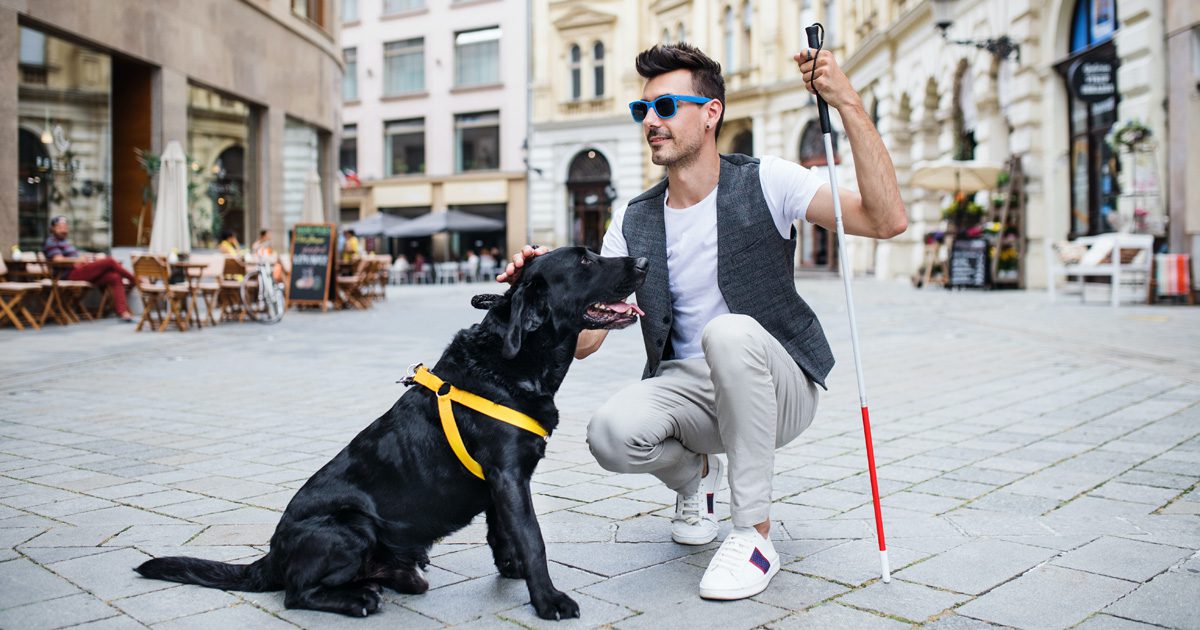Working out how to empower people always involves building up both their confidence and competence, but deciding on which one to develop first is not always easy.
I experienced the juggling act of increasing both my competence and confidence when I was a primary school student, as I learned to move around safely with a white cane.
What I learned through experience then, and can explain now, is that basic competence is required to develop confidence, and confidence is required to enable heightened competence.
Tentative steps: Using a white cane safely
The first person to teach me how to use a white cane to navigate safely was Orrin Newby, who was (and still is) one of the most relaxed and calming people I have ever known.
Orrin taught me the fundamentals of how to use a white cane properly, and how to move around safely when you can’t see where you are.
Using a white cane is not very difficult, but using it properly when you are nervous about where you are and what is going on around you is an entirely different matter.
Orrin helped me to stay calm when I was learning the basics, which resulted in me developing basic competence, but not very much confidence.
This is no reflection on how good an instructor Orrin was, but, rather, an example of how competence has to develop before confidence can grow.
High expectations - The key to developing competence and confidence
By the time Roley was my orientation and mobility instructor, I was competent enough to move safely in more difficult environments, which provided a foundation to develop my confidence.
While Orrin had been relaxed and calming, Roley was confident and matter-of-fact, which was exactly what I needed at the time to start believing in my white cane and navigation skills.
While Roley was my instructor I developed enough confidence in my competence to reduce my nervousness about navigating with a white cane, which meant I could move around more safely, because I wasn’t getting distracted by being nervous about what I was doing.
I will forever be grateful for how Roley nurtured my growing confidence with the white cane, as he somehow got primary school aged me to understand that confidence and competence have to be kept in balance, sort of like a scale.
As I became more confident with the white cane, I was able to work on heightening my competence with it.
Each time my competence increased, I learned to be a bit more confident about further improving my competence.
What Roley somehow got me to understand, is that having confidence doesn’t mean that you take big risks, but, instead, means that you can take small risks to further develop your competence, which sets you up for a positive cycle of growth.
Confidence or competence? The latter begets the former
By the time Dennis Peck was my orientation and mobility instructor during High School, I had enough competence to be confident that I could increase my competence, as long as I didn’t become arrogant or reckless with my white cane.
Between Orrin, Roley, and Dennis, I developed competence, which underpinned my confidence, and facilitated heightened competence.
At the beginning of any skill acquisition process, you need to develop some competence before you can develop confidence, but, at some point along the way, you need enough confidence to enable heightened competence.
I am so grateful that Orrin, Roley, and Dennis knew what I needed as I was developing my skills with a white cane, and for teaching me that empowering people depends on working out what they need at the time.
Confidence won’t help you unless you already have some competence, and it is difficult to increase your competence if you are not already confident enough to trust yourself to take the next step.
Please have a listen to my interview with Roley Stuart, who taught me orientation and mobility with a white cane during my final year of primary school, to gain a deeper understanding into my experience.
Blind Insights - Teaching People to Find Their Way (Special guest Roley Stuart)

